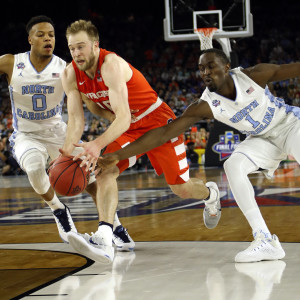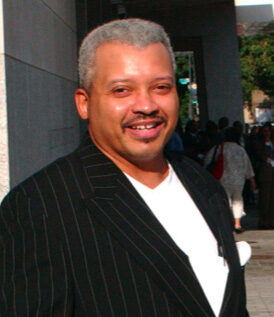NCAA President Mark Emmert recently spoke of when, and not if, while discussing the novel coronavirus.
“We have literally a half-million student-athletes,” Emmert told CNN. “We’ve got 1,100 different schools that participate in NCAA sports — 19,000 teams, not 32 (the number of NFL teams). So, to me, it’s not if a student comes down with the virus, it’s when. I think it’s almost inevitable with those kinds of numbers.”
Welcome to the high-stakes world of big-time college sports.
Just how big, here are two quick notes to consider:
— The average home football game for colleges in the national television-friendly Power 5 conferences is worth $14 million, which includes TV revenue, according to Navigate, a sports marketing and analytics consulting firm.
— In a study performed by Ohio State University to measure the effect of star athletes on major colleges, a five-star football recruit is worth about $650,000 per year to his school. Five stars are the highest performance grade a player can attain coming out of high school.
Despite those monetary highlights, colleges are in survival mode in the midst of a health and economic double-whammy.
Thus, added Emmert, who also expressed his desire that some regular students in REAL classrooms be present on campuses if sports are to be played, “You have to have in place the protocols for testing, for tracking symptoms, for tracking contact and the ability to quarantine individuals and those they’ve come in contact with. Same thing with regular students.”
We are about four months away from the beginning of fall semesters at most major colleges. That means…
“I think most people are very eager to get back to college football,” said Tom McMillen, the former college basketball star-former NBA player-turned-congressman who now is president and CEO of LEAD1 Association, which represents university athletic directors. “We just have to take it slowly. I think schools will have to adapt, such as maybe less travel.”
And more emphasis on key structural modifications.
In the stadiums, if spectators are allowed, there is talk of fans attending games on an odd/even basis. That is, fans with odd-number ticket numbers would attend one home game, while those with even-number seats would attend the next home game, in a rotating fashion.
In the classrooms, remember those 200- to 400-seat lecture halls? Well, how about half of the students attending the course in person, while the other half view online. Then, they flip-flop for the next class session.
College officials nationwide have been conducting meetings to consider various contingency plans and scenarios to implement for the fall semester — for regular students and athletes.
One of those officials is Christine Plonsky, executive senior associate athletic director/chief of staff at the University of Texas, which features an enrollment of 52,000 students who double as faithful Longhorns fans.
“We have several committees studying re-engagement for our students, faculty and staff,” Plonsky said. “It’s still a work in progress.”
Texas, like most colleges, went all digital technology, converting to online classes in midstream of the spring semester, a huge undertaking for such a massive university during these times when crises provoke improvisations. Including social distancing, face masks, Zoom and MicroSoft Teams video-chats.
“I didn’t think we could do everything online on such a huge scale at a major research university like this,” Plonsky said. “But we made a pivot in about a two-week period that was amazing.”
Still, there is a nagging monetary factor hovering like a bad dream over many of the nation’s colleges. The University of Wisconsin’s top 25 highest-paid employees in the school’s athletic department are set to take a 15-percent pay cut for the next six months.
At some schools, certain non-revenue producing sports may be eradicated.
In 1918, the annual Army-Navy football rivalry was canceled because of the latter stages of World War I and the devastating waves of the Spanish Flu pandemic. But…
“They didn’t have expanded testing back then,” McMillen said. “Today, we have better access to testing.”
Second…
“Also, everybody will have to do their share; just like 9/11, we are entering a different time.”
With online classes at home looming by state order for California public-college students this fall, some students and parents nationwide are considering not returning to school in any form until in-classroom courses are en vogue again. For real, they miss campus life.
As Scott Galloway, who teaches marketing at New York University’s Stern School of Business, said in a New York magazine interview: “Even wealthy people just can’t swallow the jagged pill of tuition if it doesn’t involve getting to send their kids away for four years. It’s like, ‘Wait, my kid’s going to be home most of the year? Staring at a computer screen?’”
All of this brings us to Academy Award-winning actor Matthew McConaughey, who, appearing on Fox News Channel, tried to disseminate a message of take-one-for-the-team unity coupled with the can-do attitude of the “Greatest Generation” of 75 years ago. That’s during today’s clutches of the coronavirus and a deeply polarized nation of red states vs. blue states.
“Look at who we are in World War II. And we have a crisis that came to us. We were united in that purpose,” said McConaughey, who is an adjunct professor of filmmaking at his alma mater, the University of Texas, where he still attends the biggest of Longhorns football games.
“And, now, all of a sudden the human factor started to get split and two tribes started fighting each other in partisan politics. That is not what we need. This is a tug of war at the virus. We need all hands on the rope.”
Even in sports, in a high-stakes environment.


